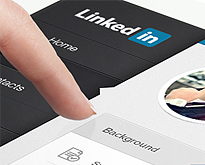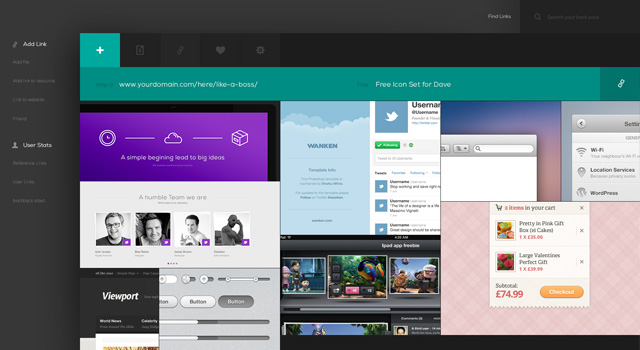Last Updated on March 5, 2024
Rather than the design of a website, it’s the users that determine your success. You obviously need to get the basics of web designing right, but what is of utmost importance is that you need to deliver a website that a user will like.
Doesn’t the client for whom you are designing enter the picture here? Of course the client, essentially the website owner, is important, but all website owners want their websites to be successful and this is only possible if the website meets the expectations of the user.
Give the users what they want; this thinking is sound enough, but in order to do that, you need to keep in mind certain user defined principles that will allow you to adopt a user centric approach towards designing your website.
Let’s take a look at them:
1. Design with Focus on Quality and Credibility
You, me, everybody loves using websites that have been designed professionally and which have high quality content that is relevant to the purpose of the website, is readable, is interesting and which enhances the credibility of the site.
Design always plays a supporting role to the content on the site. What is it that users are looking for on a website? It’s information, and not designs; if you offer that information to the users, they are going to be satisfied with the website. The design enters the picture to enhance the delivery of the message. It mustn’t act as a barrier to all the information on the page.
2. Design To Scan and Not to Read
Design for short attention spans. Your users don’t have an endless amount of time to spend on your site. So, make your content scan worthy. Give them some anchors which will help them go through the web page they are browsing through, easily and very efficiently.
So, how do you ensure that your users are able to scan your site quickly? For one, your textual content shouldn’t be long winding. Keep your sentences short and to the point. If there is something important that you want the user to notice, highlight that content. The placement of all the important parts of your content should be perfect. When users visit the web page their eyes must directly fall on the important content. Create and place it in a way that makes it attention grabbing.
3. Design for User Intuition
Users don’t take time out to understand why you have designed a particular web page in a certain way. If they see a design, they depend on their intuition to help them go through the page; but remember this intuition is based on their past memories of using a website. Intuition in part, is born out of learning and remembering. As users go through various websites, they keep building up on their experience of using a website, this leads to them using a particular website with ease. What’s more, they expect certain design elements to be present on all regular web pages; if they don’t find these elements on a page, they might get confused and close the web page.
You don’t want that to happen, so you need to design for user intuition. Here again, usability comes into the picture. If your users expect your website to be designed in a certain way, then you will need to give them what they want.
4. Allow Users to be in Control
Consistency in data presentation throughout the website means, the users are not prone to confusion. This will essentially mean that users will be able to control their browser easily. Let me give an example; say you are on a site and going through its services page, and there is an unexpected popup; now a popup is all well and good, but this popup interferes with your need to go to a different service page. Result, you will either need to close the popup, and if that is not an option, go where the popup wants to take you. This is not the kind of user experience you want to offer website visitors. You need to make sure that they are able to take charge of their browsing experience when they are on the site.
5. Don’t Sacrifice Function for Form
This is what I call the thumb rule of contemporary website design. Yes, your website needs to look good; yes, it needs to feel unique; yes it needs to be engaging; and yes, it needs to be interactive. But, all this shouldn’t happen at the cost of functionality. Form should never override the function of the site. A user wants a website that looks good, but he wants the website to perform even better. At the end of the day, functionality of the site reigns supreme, and design mustn’t impede the information flow of the site. The design must facilitate optimum performance of the site from the user’s perspective.
End Words
Give importance to the user. That’s the bottom line while designing your website. All your designing decisions, the choice of design elements, their placement and everything and anything else, must be dependent on the user’s expectations from your site.
This brings us to an important question? How do you know what the user wants? This knowledge doesn’t come out of thin air, but is a result of conducting thorough research into the needs and requirements of your target audience. You need to understand what they want, the kind of information that they are looking for, and whether they are really keen on going through a website that is visually intensive. This will give you an idea of the balance between visuals and function that is required on your site.
A user orientation in designing doesn’t come easy; it takes time and a lot of effort. What it also needs is a lot of experience with respect to putting yourself in the user’s shoes and thinking like the user. But it will come, if you put in the effort required.
Check out our previous articles:
- 15 Valuable Tools To Help Grow Your Business In 2013
- The Most Effective Marketing Strategies For 2013
- Powerful Landing Page Tips for Your Success
- 25 Premium Corporate PSD Templates
- Get the Job: Resume Writing Tips and Quality Templates
We hope you enjoyed this article! Please don’t forget to subscribe to our RSS-feed or follow Inspirationfeed on Twitter, Google+, and Facebook! If you enjoyed the following article we humbly ask you to comment, and help us spread the word!
About The Author
John Siebert is the President and CEO of TranquilBlue – A NYC Web Design Company that focuses on all kind of website design, mobile app development and search engine marketing.


